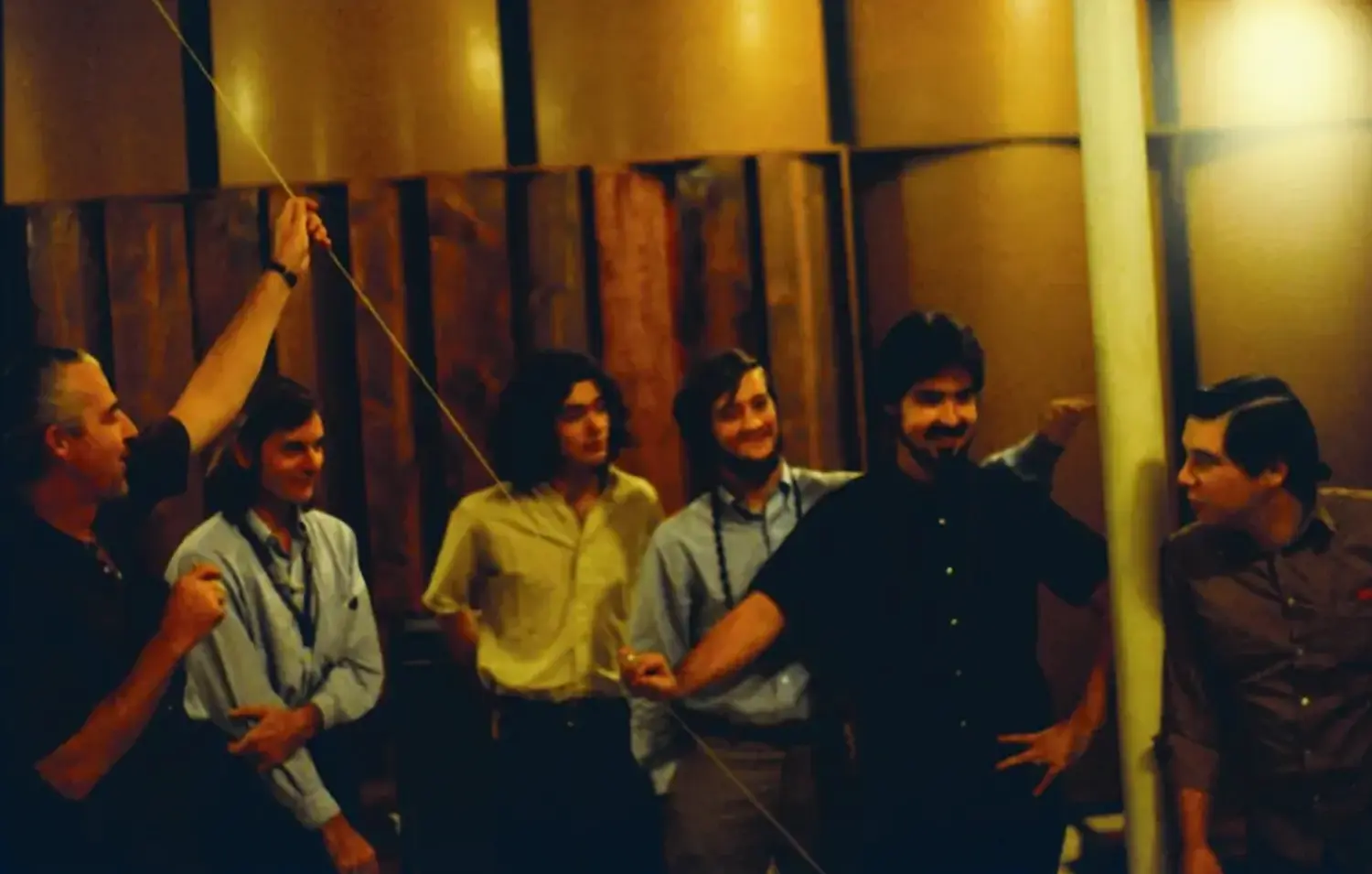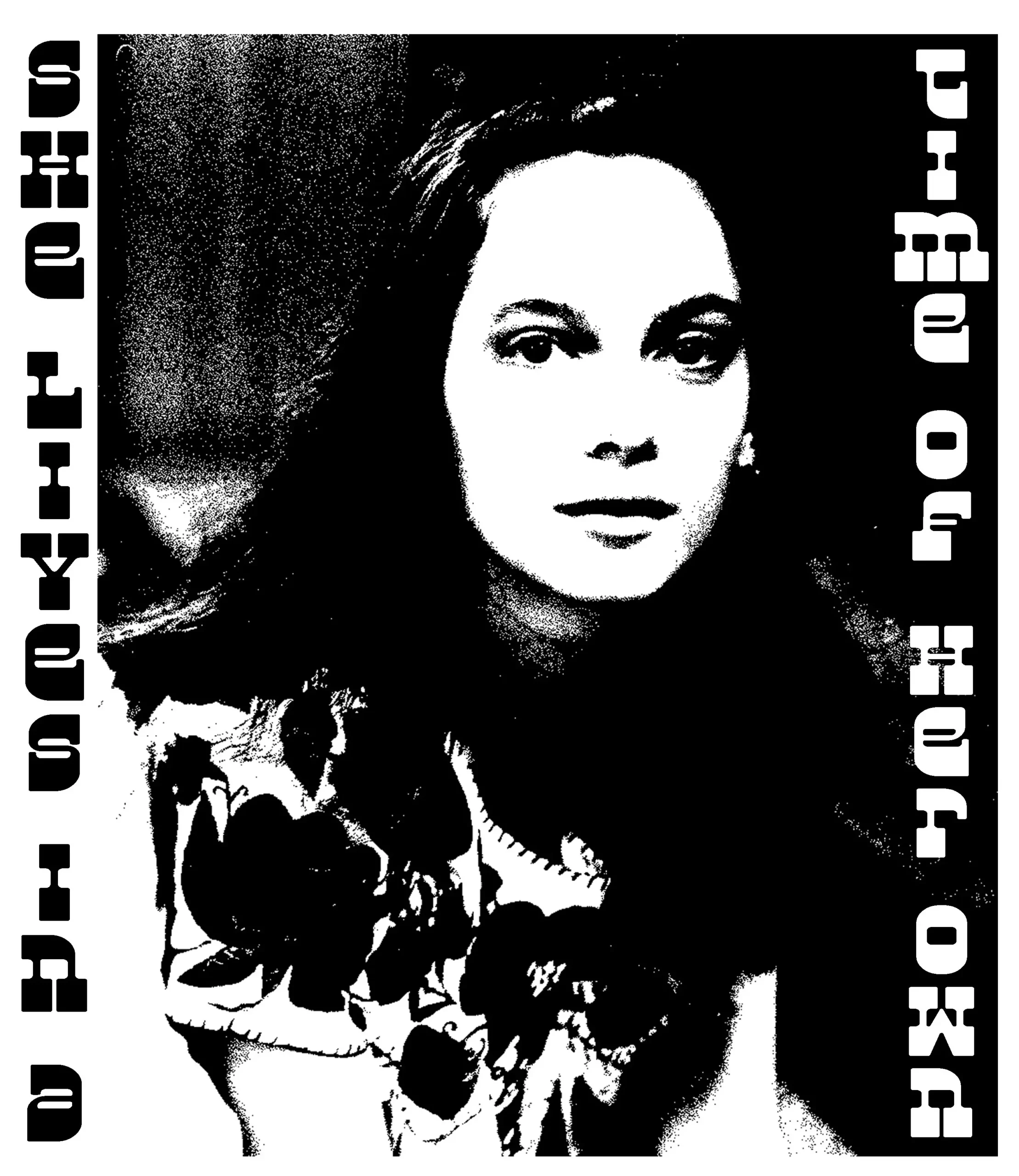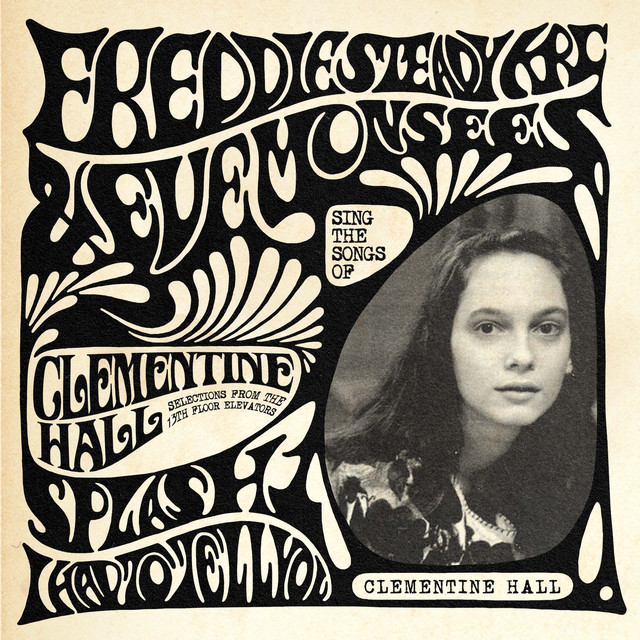

The Girl in the Photograph: Clementine Hall
There are very few photographs of Clementine Hall – she disliked having her photograph taking that much. The ones that do exist are revealing; visually arresting, in various incarnations of the word.
She first stared back at me from Russell Wheelock’s photographs of her at the13th Floor Elevators’s Easter Everywhere sessions in August 1967 (first published in Paul Drummond’s biography Eye Mind). I still recall the moment I received my copy of the book in 2013, and the book opened to her image. Wearing an embroidered dress that she handmade herself, Clementine sits next to the band’s lyricist and jug player, Tommy Hall. The images are like still frames in a series of playful yet serious movements; I didn’t know at the time that Clementine was married to Tommy (and the photos capture a moment during their breakup) and that she had already lived an incredibly full life before aligning with the Elevators at the age of 28.
The second time I saw Clementine was when she was literally arrested: awoken at her home in Austin by police in the middle of the night (January 27 1966), Clementine grabbed whatever clothing she could find in the dark (her husband Tommy’s wrinkled striped pyjamas and cardigan) and was taken – bedraggled – to Travis County jail, held overnight with Roky, John Ike, Stacy, and Tommy, on ‘dope charges’. The Austin Statesmen account of the bust (January 29 1966) has the audacity to spell her name incorrectly as “Cleamantine” (it’s pronounced ‘teen’). Clementine’s mugshot laid hidden and undiscovered for many years until Drummond uncovered the photo for his research; it’s an image that she “always wanted to be my album cover.”
Until I read Eye Mind, I’d had no idea about Clementine’s history or story; her voice sprung from its pages for the first time, ever, and it was a revelation. ‘C. Hall’ (as she was credited on the back of album covers) became ‘Clementine’. As Drummond notes, “Clementine, although never an actual member of the 13th Floor Elevators – she might as well be credited as such. She not only named the band, she co-wrote songs (and uncredited – honed many more), she had songs written about her and if nothing else she provided a strong female influence upon them” (2007). The more I delved into the band, the more I realized that, like Powell St. John, she wrote song lyrics for the group – hers include “Splash 1” (Psychedelic Sounds) and “I Had To Tell You” (Easter Everywhere) – and was the inspiration for “She Lives In A Time of Her Own” (Easter Everywhere), as well as coining the title of their masterpiece “Slip Inside This House” (Easter Everywhere).
Clementine’s life reads like a film: from being born (quite literally) on the Golden Gate Bridge in San Francisco in 1939, to a childhood that found her visiting Diego Rivera and playing with Frida Kahlo’s goat (her father, a military attaché over in South America), to growing up down the road from the Kennedy’s in Washington, to Robert Kennedy sending the car for her first wedding. Shaking off an upbringing of privilege, Clementine fell in love with Tommy Hall at the University of Texas shortly after her first peyote experience, and was sucked into a psychedelic maelstrom that led her through the journey of the band, as well as her own. In her preface to the 13th Floor Elevators: Sign of the 3 Eyed Men box set, Clementine said: “I know I’m a feminist but you couldn’t tell it from my activities – needlepoint, embroidery, playing piano, absolutely the obligation of a young woman hoping to marry well, that was my parents’ hope and not walk out of society by marrying someone like Vince, my first husband [at age 17], or Tommy” (2009). She became Tommy’s mentor during his freshman year in English literature (functioning as his “dictionary, Thesaurus, and rhyming dictionary” (2009), he in turn suggested she free her inhibitions with nude modelling for the art department.
Clementine’s role as a muse – a source of inspiration, a guiding spirit (Des Barres 2007) – can be felt, and appears, everywhere in the Elevator’s story. In her own words, “at critical, emotionally charged moments, I saw my job as reminding people of the connections they had already forged, and the love they had already expressed to each other” (Hall 2009). While there’s often a sentimental image of the muse as a ‘pretty lady’ who’s the object of the artist’s ardor (Solnit 2021), Clementine shatters these boundaries for woman in rock and roll: as a muse, she defies traditional conceptions of the word, not just inspiring male artists through her presence and beauty, but also creating works of art and song lyrics of her own making. Women in the arts, such as photographer Lee Miller and conceptual artist Yoko Ono, subverted this role in their own right(s) in 1940s and 1950s America. In 1960s rock, women who were already members of bands wrote lyrics and performed them with their male counterparts; Grace Slick (Jefferson Airplane), Janis Joplin (Big Brother and the Holding Company), or the all-female band The Ace of Cups. Clementine offered something different, contributing to the Elevators in a myriad of ways, not just lyrically but domestically, sartorially, spiritually. This arrangement also pushed boundaries within the context of a new youth counterculture, where new social patterns and relationship dynamics began to emerge. She lived with the Elevators in Texas and San Francisco, and travelled with them across the country to their gigs. She contributed to their songwriting and recording sessions: “At the time it was the most natural thing in the world for me to regard [the boys] as my sacred charges, individually and as a group, and to act accordingly […] although I was Tommy’s wife, I often say I was married to a rock and roll band […] It was like a love affair, but between five people, and it continued like that for quite some time” (Hall 2009).
Like other women who played a significant role in shaping bands, such as Astrid Kirchherr with The Beatles in Hamburg a few years earlier, Clementine ventured into spaces where young woman had not gone before. Toss in psychedelics, and this was a new world. Whether she was aware at the time, Clementine was part of a larger collective of women who circumvented traditional gender roles in the new world of psychedelic rock bands. These women helped to create new senses of community, individually contributing to a larger whole. In this regard, Clementine holds high court with such integral women as Big Brother’s Nancy Gurley (stringing beads on speed with Janis late at night with baby Hongo on her hip), Linda Gravenites and Peggy Caserta (dressing Janis in hip threads and feathers) to poet Lenore Kandel, Phyllis Wilner, Natural Suzanne, and Judy Goldhaft baking bread and usurping the mainstream in The Diggers free city. Centered on the periphery, these were women on the verge of the personal and political vanguard.
Now unraveled in the forthcoming revised edition of Eye Mind (which I’m fortunate to be editing) is more of Clementine’s story, shared over a series of phone calls and interviews over the past few years. Revealed in detail for the first time is more of Clementine’s story living on her own in the Haight Ashbury in San Francisco: selling copies of the jasmine-infused Oracle newspaper on street corners, cooking food for The Digger’s feed-in’s, designing snake embroidered shirts for January Jones’ client, Jim Morrison (check him out in footage at the Roundhouse in London, 1968…), taking LSD with Janis, hanging out at the Diggers Free Store on Cole Street with Peter’s Berg and Coyote, attending the Human-Be In with her son Roland in Golden Gate Park on January 14 1967. Until now her time there, with the Elevators, was only captured in a Mikel Erickson photograph of her – a haunting side profile in orange velvets and pale greens – taken in the Panhandle under the eucalyptus trees at dusk in June 1967. Both part of and outside of the myth of the Summer of Love, Clementine was there.
As Digger Peter Berg said when asked about this time in San Francisco, “that period was real, and it was extraordinary.” Judy Goldhaft, his partner, also contends that “the ideas for the rest of the continent spring out of the earth here. The Aloni Indians said, “we dance here on the edge of the world” (Hamlin 2022). The Diggers credo was: ‘everything is free, do your own thing.’ And Clementine: “I always lived on the outside of society” (Hall 2009).
It’s an honour to write these words about Clementine Hall:
“I always wanted to be thought of as a muse.”
Marlie Centawer
Professor, Centre for Studies in Arts and Culture, Brock University
PhD Candidate, Liverpool School of Art and Design, Liverpool John Moores University
Works Cited
Des Barres, Pamela. Let’s Spend The Night Together: Backstage Secrets of Rock Muses and Supergroupies. Chicago: Chicago Review Press, 2007.
Drummond, Paul. Eye Mind. Feral House, 2007.
13th Floor Elevators: A Visual History. New York: Anthology Editions, 2020.
Hall, Clementine. “Preface,” 13th Floor Elevators: Sign of the 3 Eyed Men. Charly Acquisitions Limited, 2009.
Hamlin, Jesse. “Summer of Love: 40 Years Later / Peter Berg and Judy Goldhaft.” SFGATE. May 20, 2007 Accessed 01 October 2022.
Solnit, Rebecca. Orwell’s Roses. London: Granta Books, 2022.
Selections from the
13th Floor Elevators
Splash 1 / I Had to Tell You
Featuring Freddie Steady Krc & Eve Monsees

THE BUST
Clementine is a big fan of the mug shots taken by the Austin police. She says these photos are universal and could have been taken yesterday. So why was Clementine arrested?
On January 27, 1966 the Austin police searched Tommy Hall’s house where the Elevators had gathered and proceeded to book everyone due to finding marijuana. Clementine was asleep in the bedroom at the time and realized what was happening. Clementine is actually wearing Tommy’s clothes in the mug shots, which is why they look a little baggy and ill fitting. She threw them on in a flash when she heard the police.
“I realized they really were going to take Tommy. I called my father and said ‘Come get the children, I’ve got to make myself get arrested’. They actually didn’t want to arrest me, though they finally obliged me, and I’m glad that I was put in the same car and Tommy made it safely to the police station without being beaten up” (by the police).

Check back at this site and you will find an exclusive musical offering featuring the songs that Clementine co-wrote.
The site is currently under construction with much more to come!